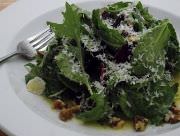Essential Kitchen Information

Essential Kitchen information on this page:
- Stages of Cooked Sugar
- Oven Temperatures and Conversions
- Grill Temperatures
Stages Of Cooked Sugar
Sugar stages:
Thread
230° to 234° F / 110° to 112° C - spin a soft thread
Soft ball
234° to 240° F / 112° to 116° C - form a soft flat ball
Firm ball
244° to 248° F118° to 120° C - form a firm but pliable ball
Hard ball
250° to 265° F / 121° to 129° C - form a hard compact ball
Soft crack
270° to 290° F / 132° to 143° C - separate into hard threads
Hard crack
300° to 310° F / 149° to 154° C - form into hard brittle threads
Caramel
320° to 338° F / 160° to 170° C - form hard brittle threads and the liquid will be amber
Oven Temperatures Conversion Chart
A quick guide to easily move between Fahrenheit, Celsius, and gas numbers with a heat description.
For example, the first row is 225° Fahrenheit which is 110° Celsius and these equate to gas number 1/4 which is a cold oven.
225° F - 110° C - 1/4 - cold
250° F - 130° C - 1/2 - very cool
275° F - 140° C - 1 - cool
300° F - 150° C - 2 - slow
325° F - 170° C - 3 - moderately slow
350° F - 180° C - 4 - moderate
375° F - 190° C - 5 - moderately hot
400° F - 200° C - 6 - moderately hot
425° F - 220° C - 7 - hot
450° F - 230° C - 8 - hot
475° F - 245° C - 9 - very hot
500° F - 260° C - 10 - extremely hot
Hand Test For Grilling Temperatures
Once coals are covered with a uniform layer of fine gray ash, the fire temperature can be tested by removing the grid and placing your hand, palm down, at grid level. The number of seconds you can comfortably hold your hand there will give you a rule of thumb for how hot the fire is.
2 seconds - Hot (for searing)
3 seconds - Medium Hot (for grilling)
4 seconds - Medium (for grilling)
5 seconds - Medium low (for covered cooking)
6 seconds - Low (for covered cooking)
More Kitchen Information
- Measurement is a wonderful tool. It allows us to precisely create, record, and recreate something. The problem with it is that there is no universal standard for a singular measurement system.
- Cooking vocabulary is a resource or glossary of essential cooking terms.
- Cooking tips to simplify food preparation.




